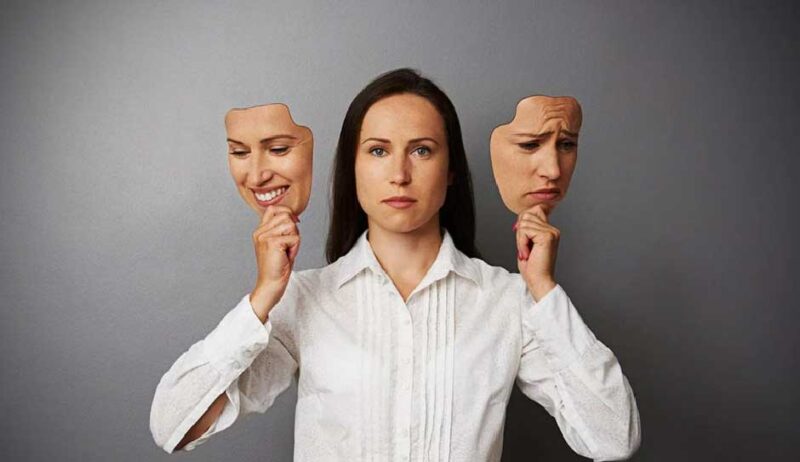Getting an accurate diagnosis for mental health issues like BPD and bipolar disorder can change everything. Proper treatment depends on clear understanding. Many people confuse these two conditions because they share some similar signs. But knowing how they differ can help you or someone you care about get the right help. Let’s explore the causes, symptoms, and key differences between borderline personality disorder and bipolar disorder to clear up the confusion.
What Is Borderline Personality Disorder (BPD)?
Overview and Definition
Borderline personality disorder, or BPD, is a mental health condition that impacts how people feel and behave. It’s marked by intense emotional instability, making relationships, self-image, and impulses quite unpredictable. Around 1.4% of adults nationwide are diagnosed with BPD, with women being slightly more affected than men. For many, life feels like a rollercoaster—up one day and down the next.
Causes of BPD
Researchers believe both genetics and environment play roles in developing BPD. Traumatic childhood experiences, like abuse or neglect, often set the stage. Brain studies suggest differences in the areas responsible for controlling emotions and impulses. These changes can make it harder for some to manage feelings or respond calmly.
Key Symptoms of BPD
- An intense fear of abandonment that leads to frantic efforts to avoid being left alone
- Unstable relationships, swinging from idealization to devaluation
- Impulsive actions, such as reckless spending or dangerous behaviors
- Chronic feelings of emptiness or boredom
- Emotional swings that can be triggered by minor events
- Risk of self-harm and suicidal thoughts
What Is Bipolar Disorder?
Overview and Definition
Bipolar disorder is a mood disorder characterized by clear episodes of mania and depression. These mood swings aren’t just bad days—they are distinct periods that can last days or weeks. About 2.8% of adults experience bipolar disorder during their lives, often beginning in late teens or early adulthood. The condition impacts energy, motivation, and overall mood.
Causes of Bipolar Disorder
Genetics play a big role. If a close family member has bipolar disorder, chances of developing it increase. Brain imaging shows imbalances in neurochemicals like serotonin and norepinephrine. Life stressors or major events can also trigger episodes, especially if someone is genetically predisposed. Environmental factors don’t cause bipolar but can influence when symptoms appear.
Key Symptoms of Bipolar Disorder
- During manic episodes:
- Elevated mood, feeling extremely happy or invincible
- Rapid speech and racing thoughts
- Decreased need for sleep
- Increased activity levels and risky behaviors
- Inflated self-esteem or grandiosity
- During depressive episodes:
- Persistent sadness or hopelessness
- Loss of interest in usual activities
- Fatigue and low energy
- Feelings of worthlessness or guilt
- Difficulty concentrating or making decisions
- Mood swings happen in cycles, often with clear episodes of high or low energy, shifting over time.
Comparing Causes: Underlying Factors of BPD and Bipolar Disorder
Genetic and Biological Factors
Difference between BPD and bipolar: Bipolar disorder has a stronger genetic link than BPD. If a parent has bipolar, children are more likely to develop it. Brain scans show differences in regions involved with mood regulation. In contrast, BPD’s roots are often tied to early trauma and environmental factors, although genetics still contribute.
Environmental and Psychosocial Factors
Trauma, abuse, or neglect in childhood are common causes of BPD. These experiences shape how the brain develops, especially in areas that control emotions. Stressful events or substance abuse can also trigger bipolar episodes, especially in those with a family history.
Brain Structure and Function
Imaging studies reveal that bipolar disorder involves abnormal activity in the brain’s mood regulation circuits. BPD, on the other hand, shows changes in areas that manage emotional response and impulse control. These biological differences help doctors tell the two conditions apart.
Contrasting Symptoms of BPD and Bipolar Disorder
Emotional and Behavioral Symptoms
People with BPD often feel overwhelmed by intense emotions, and their reactions can seem out of proportion. They’re usually terrified of being abandoned and may react with anger or tears. Those with bipolar disorder, meanwhile, experience marked shifts in mood, energy, and activity levels—like switching from feeling on top of the world to feeling hopeless.
Relationship Patterns
BPD causes unstable, sometimes chaotic relationships, where loved ones may feel pushed away or suddenly adored. In bipolar disorder, social changes usually coincide with mood episodes. During mania, one might be more outgoing and talkative, but during depression, social withdrawal is common.
Impact on Daily Functioning
Impulsivity and self-harm are hallmarks of BPD, affecting daily life and safety. Bipolar disorder’s mood swings can disrupt work, school, and personal life, with episodes often requiring significant adjustments or treatment.
Duration and Course of Symptoms
BPD symptoms tend to be persistent, sticking around over years. It’s seen as a chronic pattern of instability. Bipolar disorder, in contrast, involves clear episodes that come and go; periods of stability may exist between mood swings.
Actionable Tips for Differentiation and Support
- Always see a mental health professional for assessment and diagnosis.
- Recognize that treatment approaches differ for each condition.
- Educate yourself and others to reduce stigma and promote understanding.
- Support loved ones with patience, empathy, and encouragement to seek help.
- Explore support groups and resources focused on both BPD and bipolar disorder.
Conclusion
Understanding the key differences between BPD and bipolar disorder is vital for effective help. Their causes involve distinct biological, psychological, and environmental factors. Their symptoms, though sometimes similar, are different in presentation and course. Proper diagnosis paves the way for personalized treatment that can significantly improve quality of life. Continued awareness helps remove stigma and promotes empathy. Remember, both conditions need specialized mental health support, but with the right help, recovery and stability are possible.






